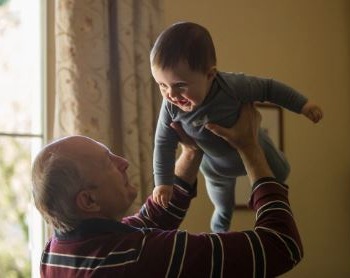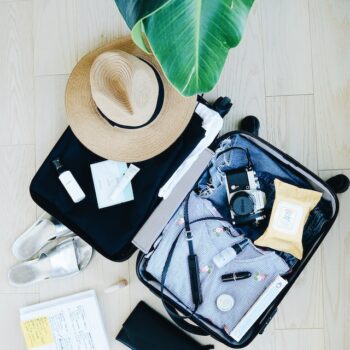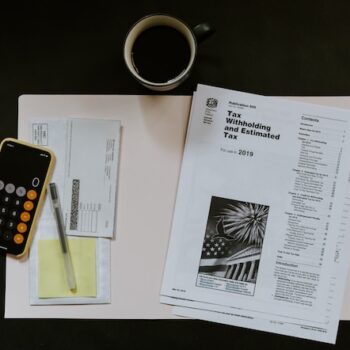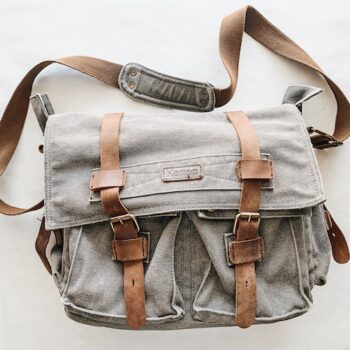
It has been quite a few years since there have been babies in the house. As first time grandparents, we wanted to get just those items that we would need on those occasions we might be babysitting. Did we really need to get a bassinet, a crib, a changing station, and the hundred other items that seem to be a necessity these days and that other websites say we grandparents need to buy? Turns out, the answer is no.
And the best part is that for the items we did need, we were able to get them relatively inexpensively by buying used (but in like-new condition) via Facebook marketplace. See more tips at the bottom of this page.
We’ll include links for some of the items referenced, but do check to see if you can get them secondhand which would be a big savings over purchasing them new.
Personal interaction and the human touch are absolute priorities. Snuggle time, tickle time, singing songs, and reading books are such important aspects of human interaction at an early age. Babies don’t need to understand what you’re saying; they just need to hear your voice. But there are times that babies under 12 months needs to grow, develop, and learn on their own. Items that facilitate this are listed below and they give baby a chance to learn independently, and give you a chance to just observe and relax for a few minutes (not many, but enough).
What To Ask The Parents To Provide
We had already gifted many of the new baby essentials to the new parents at the baby shower and beyond. Buying those same items for use in our own home just didn’t make sense. When we were watching the baby, we’d ask that the basics were brought with the baby. We asked them to bring pretty much anything that they would normally be bringing with them if they were headed out anywhere else.
- Bottles
- Formula
- Diapers
- Wipes
- Car seat
- Stroller
The Three Essentials
A Pack And Play
Most babies start off in a bassinet and then transition to a crib at around 3-4 months of age. If we could only keep one item of all the baby things we bought, the portable Pack and Play would be it. We used it for every baby stage, newborn to 2 years of age.
We bought a used Pack and Play that included a full removable bassinet, a hanging bassinet, a changing station, accessory bin, and baby mobile. This “portable nursery center” covered it all. We used the bassinet attachment until the baby was able to be put in the second level hanging bassinet. The accessory bin held all the diapers and wipes. The changing station was convenient to use, and the baby mobile was cute (but was loud to wind up and didn’t run for very long). When baby was older, the Pack and Play doubled as a playpen and bed. We could move the Pack and Play into any room; even used it outdoors. And best of all, we could break it down in less than 10 minutes and store it in a closet.
A Baby Monitor
Being able to monitor baby during nap time via a camera was as much for convenience as it was for peace of mind. We could check on baby at any time from anywhere in the house.
We already had a few IP cameras that we monitored through a phone app, so we didn’t need to buy a dedicated baby monitor. But a baby monitor is highly recommended if you don’t already have cameras. You can discretely check on the baby without having to sneak in and potentially wake him.
YouTube
We definitely agree that babies should receive minimal screen time. They need to stay focused on learning their basic motor functions and concentration skills. Screen time frequently interferes with focusing attention on a specific activity or toy. But there are exceptions…
As mentioned earlier, we believe babies should receive very little screen time (TVs, phone, computer). But if you have a colicky or overstimulated newborn, turning on a YouTube video for calming a crying newborn is a game changer. Just search for “crying newborn”. There are dozens of videos in that category. The one with the slow moving black and white circles worked wonders for a colicky 6 week old.
As babies get older, they need the 20 minutes before nap time for “down time”. Around 3 months of age, we would turn on YouTube and search for videos by “Super Simple Songs” shortly before getting ready for a nap. One year later, and these are still our “go-to” videos for the quiet time just before naps. We now know the words to pretty much every single song on that channel and we’re looking forward to the day baby sings along with us.
Everything Else
The First Three Months
The first 3-4 months are the hardest. There will be a lot of walking, soothing, and bouncing and trying to figure out why baby is crying, even though they’re only staying awake 30-45 minutes between naps. Most babies just need a soothing, human touch. A baby bouncer is invaluable when baby is awake but doesn’t need to be held. But it’s one of those items that you’ll only be using until 5 or 6 months of age. Once the baby was too big for the Pack and Play’s bouncing bassinet, we asked baby’s parents to bring their stand alone bouncer when they dropped off the baby.
Around 3 months of age when baby is staying awake for about 1.5 hours between naps. A small sensory toy is a good thing to have on hand for tummy time. Baby will probably just curiously touch it, but they’ll watch intensely while you demonstrate how to play with the toy. We would provide a story time narrative about each of the toy’s features, which seemed to keep baby entertained even though we knew they couldn’t understand a word we were saying. We found a small 5 sided activity triangle at Goodwill for under $3, which baby still preferred to play with well into 11 months of age.
At Four Months Of Age
Beginning around 4 months, the baby will start being able to support his head, although he’ll look a little like a drunken sailor. Baby will start staying awake for 2 hour stretches between naps. An exersaucer will give baby some stimulation, and will give you 15-20 minutes of a breather. At first, baby will just wobble in the seat, look at the exersaucer’s toys and perhaps accidentally play with a few of them. It’s fun watching how differently they interact with the toys each month into their development. The exersaucer was invaluable from age 4 months to 12 months. You’ll want one that has adjustable heights, has several different sensory toys, and a washable seat. If the seat bounces, that’s a bonus. A seat that rotates with baby is nice, but baby won’t really be using that functionality until around 10 months.
Five Months Old
At 5 months, a walker helps baby learn to use their legs and scoot around. They’ll be a little aimless for a few weeks and you will be doing most of the work, but they’ll soon be able to push off in their preferred direction. Like the exersaucer, the walker kept baby happily entertained for 15-20 minutes or so. Ideally, get a walker that has adjustable heights, has 360 degree wheel casters that work on both carpet and hardwood floors, and has a removable top so that it can double as an activity table or snack table. The walker will be in use until baby is a confidently walking. We were lucky to find a Combi walker that also bounced and had a removable car hood with music, steering wheel and spinning mirrors. We used it regularly with and without the car hood attachment.
Six Months Of Age
Around 6 months, the baby will gradually be introduced to solids. Now you’ll need some type of seat to support the little one while you’re trying to spoon feed. You can get a highchair, but that’s just one more large piece of furniture sitting around when you don’t have the baby. A baby table-time booster seat is the best option because the booster seat attaches to your chair and positions baby at the table height; no need for a feeding tray. Plus, depending on the height of your table, the chair holding the booster seat still slides nicely underneath the table and out of sight.
Nine Months
Baby is usually crawling with confidence by 9 or 10 months. At this point, it’s time to get baby gates and cover all the electrical outlets. We selected a baby gate that is retractable; that way it is out of sight when baby isn’t here. It’s one of the few items we purchased new rather than secondhand.
Turning Ten Months Old
By around 10 months, baby is awake around 3 hours between naps, and will start pulling himself up and practice balancing on two feet. This was the perfect age for an activity table. Because baby was also interested in crawling and exploring, he would spend a shorter time at the activity table (maybe 5 minutes at a time) but returned to it frequently in between other adventures. The total time spent at the table was probably 15-20 minutes each day. Between our arsenal of baby items (the walker, exersaucer, and activity table), baby was happily entertained for a good hour or more. This is also the age that diaper changes are more like a wrestling match. We almost overcame that by only pulling out a specific toy that he can hold during diaper changes.
Hitting Eleven Months Old
This next item we love, but we picked it up for baby at 10 months and should have waited until he was closer to eleven months of age. He loved it at 10 months, but even though he was at 97% percentile for height he still could only use his tippy toes. By 11 months, it was a perfect fit. The Pewi Y-Bike Buddy Walker is great. It allows baby to scoot around even before they are walking and will get used well into 24 months of age or longer. Its narrow seat and unique handles were a perfect combination. The main downside is that the first few days of adjustment to the Pewi are nerve-wracking and back-breaking. Getting baby used to holding on with two hands took a little time, so we hovered above him for a few days. Already being familiar with maneuvering a walker made baby’s transition to the Pewi almost seamless once he held on. We still used the Combi walker, but less often and usually closer to nap time because it required less physical energy.
What You Might Not Need To Buy
Yes, we bought these and have since learned that we could have done without. Maybe if we were full-time parents they would come in handy, but not in our situation.
Doorway Bouncers
Babies around 4-5 months of age love to bounce! And doorway bouncers do make them happy for a little while. But, they are a nightmare to get baby in and out of. It was much easier to provide bounce time on a knee or in the exersaucer. Maybe other people have more success with them, but we weren’t impressed.
Tummy Time Mats
Maybe they’re great if they come with all the bells and whistles. But they’ll rarely be used by the time baby is able to flip over on its own. We had no problem keeping baby entertained during tummy time without needing extras.








